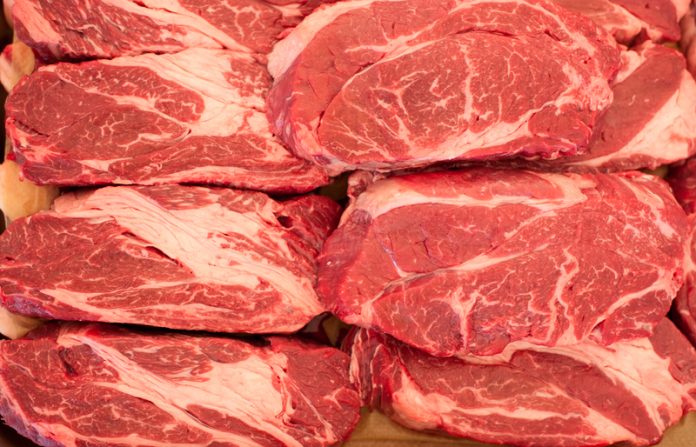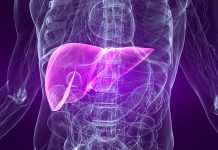Raluca Mateescu from Mateescu’s Animal Genetics and Genomics Lab explores the conundrum of human health versus beef fat consumption and opportunities for improving the health properties of beef
Animal fat has been stigmatised due to a perceived association with several diseases, from cardiovascular diseases to cancer. Because beef is perceived to have a high fat content, consumption of beef has suffered the most from this negative image.
Although the association between animal fat and disease is being challenged by new research, the idea that ‘fat is bad for you’ is well entrenched in consumers’ mind and very few people question the definition of ‘fat’ used by proponents of this argument or are aware of differences in ‘fat’ composition. As a result, the ‘fat-free’ label is still a powerful marketing tool.
There are three types of naturally occurring fatty acids, each with a different chemistry: saturated, monounsaturated and polyunsaturated. There is also trans-fat that is bad for your health (just think how often you saw the label “NO TRANS-FAT” to indicate a healthy food choice?) and is the result of the process of hydrogenation of liquid oils done by food processors to firm them up.
The other class of fat that has been linked to negative effects on health is the saturated fat. Epidemiologists identified statistical associations between a diet high in saturated fat and the incidence of coronary heart disease and colon, prostate and breast cancer. This led to the recommendation: “eat a low-fat, low-cholesterol diet.” Most of us have heard this simple recommendation so often, over the past two decades, that we can recite it in our sleep. Touted as a way to lose weight and prevent cancer and heart disease, it is no wonder much of the entire nation hopped on board. With beef labelled as a food high in saturated fat, per capita consumption of beef declined.
It turned out that this simple message is actually wrong. Detailed research carried out in the last decade shows that the total amount of fat in the diet, whether high or low, is not really linked with diseases. What really matters is the type of fat in the diet. Results from the large and long “Women’s Health Initiative Dietary Modification Trial” showed that eating a low-fat diet for eight years did not prevent heart disease, breast cancer, or colon cancer and did not do much for weight loss, either. What is becoming clearer is that bad fats, meaning trans-fat and some short-length saturated fats, increase the risk for coronary heart disease as well as other diseases, while good fats, meaning mono- and polyunsaturated and longer-length saturated fat, lower this risk. The key to a healthy diet is not to reduce total fat intake but to substitute bad fats for good fats.
Beef fat composition
How is beef fitting into this scenario? Marbling fat is an important meat quality trait in relation to juiciness, aroma and tenderness and is the fat depot of most interest in relation to fatty acid composition and human health. It refers to the white flecks or streaks of adipose tissue between the bundles of muscle fibres and is closely linked to intramuscular fat content.

Beef intramuscular fat (figure 1) consists on average of:
50% saturated fatty acids. However, about 32% is stearic acid or C18:0 – a longer chain saturated fatty acid which does not increase plasma low-density lipoprotein (or bad cholesterol) level;
45% monounsaturated fatty acids and;
5% polyunsaturatedfatty acids (including omega 3, omega 6 and CLA or conjugated linoleic acid).
Beef is also a major dietary sources of conjugated linoleic acid (CLA), which possesses a range of health promoting biological properties (antioxidant, reduces circulating cholesterol, reduces cardiovascular risk, protects against atherosclerosis, anti-carcinogenic, reduces body content of adipose tissue and lipid, enhances the immune system). Beef contributes significantly to man’s intake of the important fatty acids EPA and DHA (omega 3 fatty acids), of which there are few rich sources apart from oily fish.
Genomics research on healthfulness of beef
Ongoing research in the Department of Animal Sciences at University of Florida is focusing on characterising the nutritional and health value of beef from Bos Indicus influenced cattle. The goals are to determine the extent to which phenotypic variation is controlled by genetics and to develop genomic tools that will allow identification of genetically superior animals, with respect to these traits and so they can use this information for selection, management and marketing.
If beef producers could select cattle that have more beneficial fatty acid profiles, they could enhance the nutritional and health value of such beef. Such beef could increase profit to producers because consumers likely would be willing to pay a premium for beef that consistently has both high nutritional and health value. In addition, this nutritionally enhanced beef is likely to increase the overall demand for beef and to ensure the continued growth of the industry.
Our findings could be great news for producers raising Bos Indicus influenced cattle, as our preliminary data shows they may have a healthier fatty acid composition. This may open the door for producers to appeal to health-conscious consumers, through marketing beef that has a more desirable fatty acid composition. Additionally, research continues towards finding genetic markers that will allow producers to identify and select animals that will produce beef with higher percentages of polyunsaturated fatty acids, as well as lower percentages of saturated fatty acids.
In conclusion, I would say that the beef industry today is in a good position to respond to the demands of health-conscious consumers. To capitalise on this trend, the industry needs to focus its research and promotion efforts towards the nutritional and health benefits of meat consumption.
Please note: this is a commercial profile
Raluca Mateescu
Associate Professor of Quantitative Genetics & Genomics
Graduate Program Director
Mateescu’s Animal Genetics and
Genomics Lab
Tel: +1 352 392 2367
Editor's Recommended Articles
-
Must Read >> Understanding mental health – through our stomachs



























